What is Cherenkov radiation?
Cherenkov radiation, or Čerenkov radiation, is a fascinating phenomenon that occurs when charged particles, such as electrons, travel through a dielectric medium (like water or glass) at speeds greater than the phase velocity of light in that medium. This results in the emission of a characteristic blue glow, often seen in nuclear reactors and other high-energy environments.
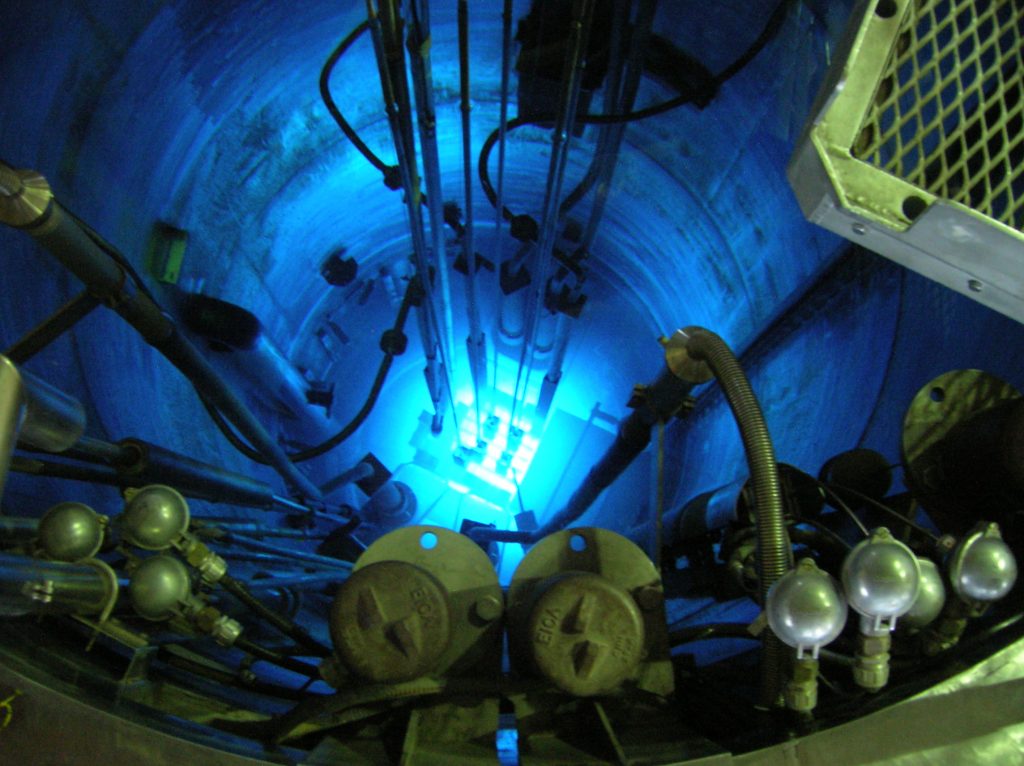
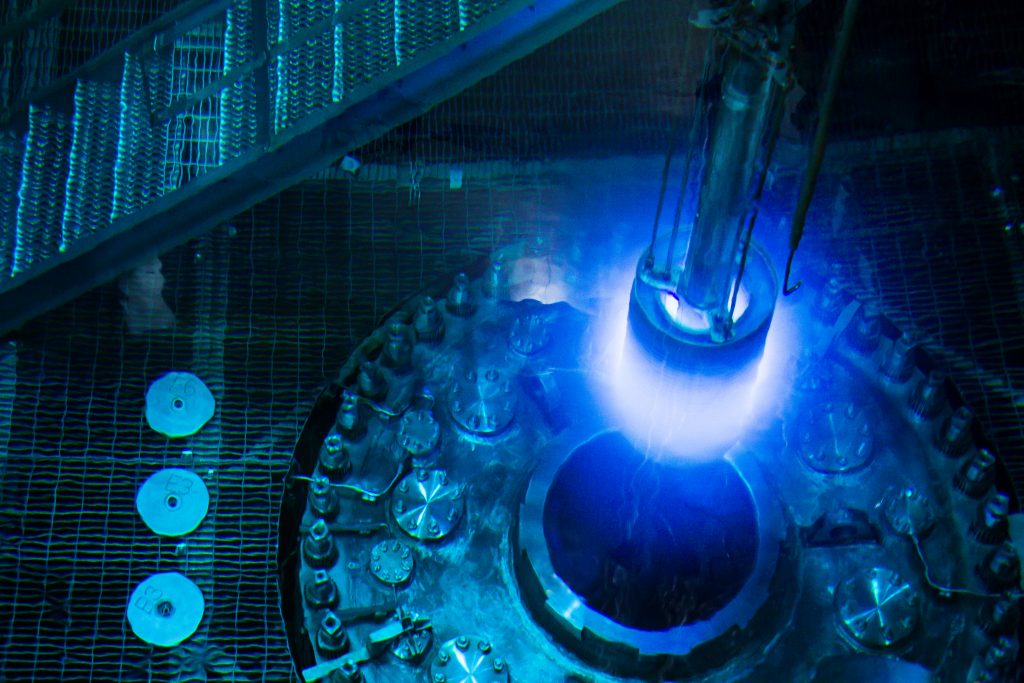
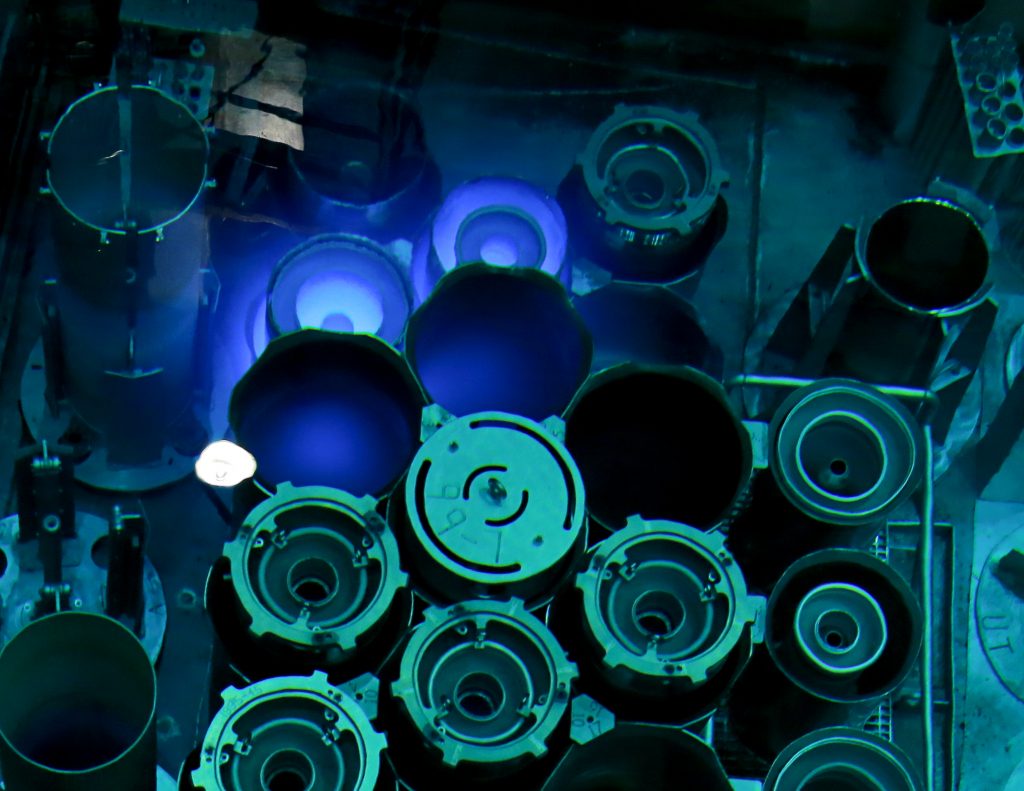
The Discovery of Cherenkov Radiation
The phenomenon is named after Soviet physicist Pavel Cherenkov, who first observed it in 1934. Cherenkov noticed a faint blue light around a radioactive preparation in water during his experiments. His work, along with the theoretical explanations provided by his colleagues Igor Tamm and Ilya Frank, earned them the Nobel Prize in Physics in 1958.
How Cherenkov Radiation is Produced?
Cherenkov radiation is analogous to a sonic boom, which occurs when an object travels faster than the speed of sound in air. In the case of Cherenkov radiation, the charged particle moves faster than the speed of light in the medium, causing a shockwave of light. This happens because the speed of light in a medium is slower than in a vacuum. For example, light travels at about 75% of its speed in water compared to a vacuum.
Why is Cherenkov radiation blue?
When a charged particle moves through the medium, it polarizes the molecules along its path. As these molecules return to their ground state, they emit photons, creating visible light. The intensity and angle of the emitted light can provide valuable information about the particle’s speed and energy.
Cherenkov radiation is typically observed as a blue glow because the intensity of the emitted light is higher at shorter wavelengths, which correspond to the blue and ultraviolet part of the spectrum. In some cases, if the medium has different refractive indices for different wavelengths, the Cherenkov radiation could potentially include other colours, but this is less common and usually less intense compared to the blue light.
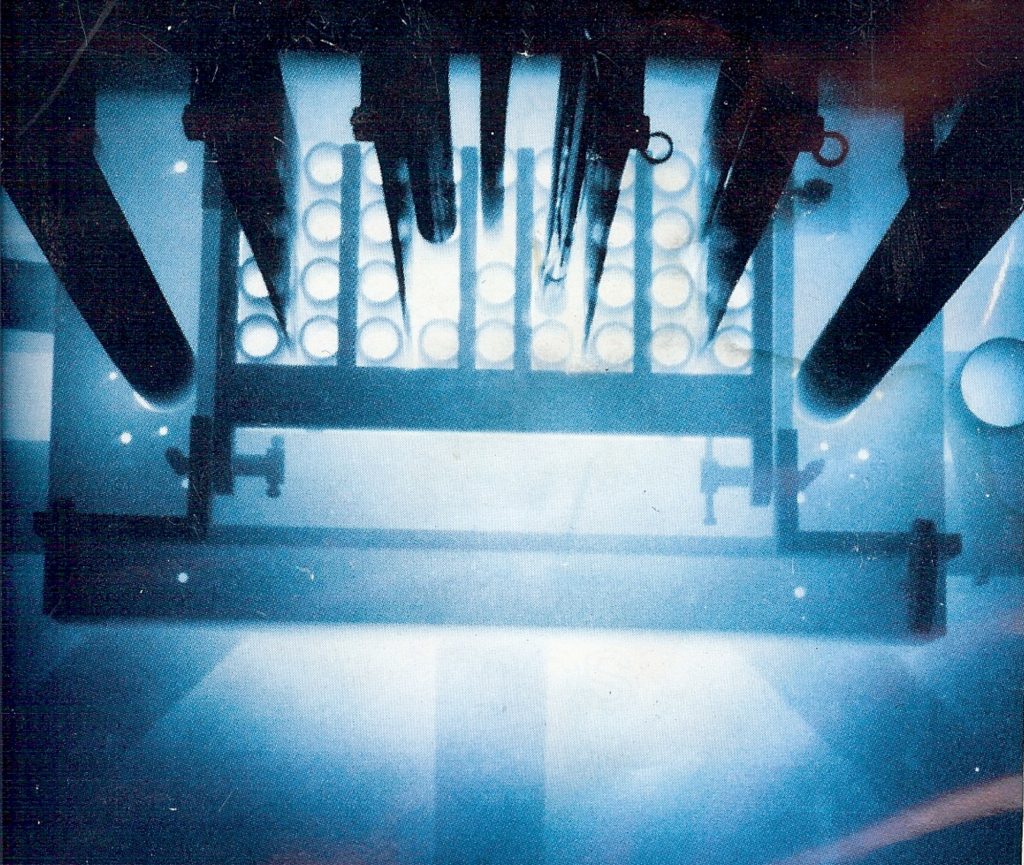
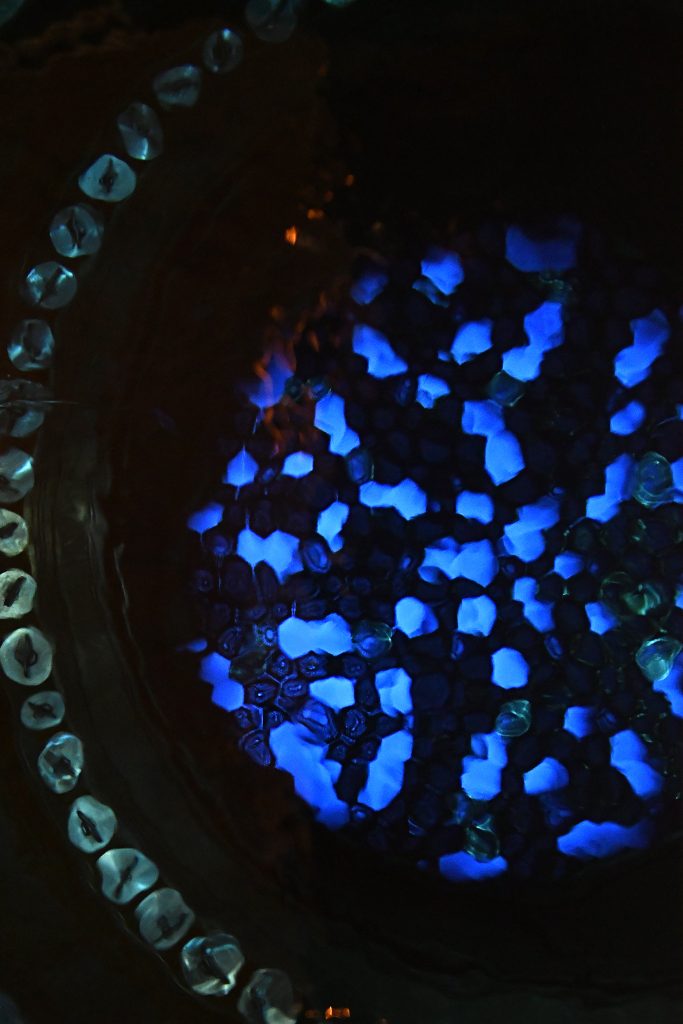
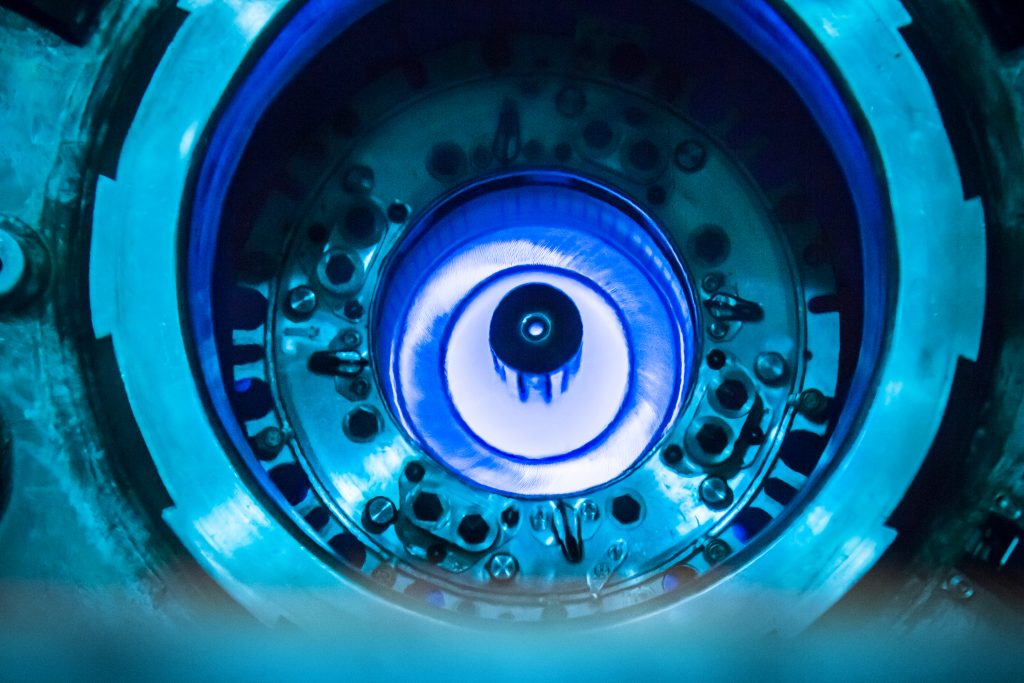
Is Cherenkov radiation faster than light?
The speed of light in a vacuum is the universal speed limit, approximately (299,792,458) meters per second. However, light travels more slowly in other media. When a particle exceeds this reduced speed of light in the medium, it emits Cherenkov radiation. So, while the particle causing Cherenkov radiation is moving faster than light would in that medium, it is not exceeding the speed of light in a vacuum.
Is Cherenkov radiation harmful?
Cherenkov radiation itself is not harmful; it is simply light emitted when charged particles travel faster than the speed of light in a medium. However, the presence of Cherenkov radiation often indicates high-energy particles or radiation, which can be harmful.
For example, in nuclear reactors, the blue glow of Cherenkov radiation is a sign of high-energy particles being emitted, which can be dangerous if not properly contained. Similarly, in particle accelerators, the particles that produce Cherenkov radiation are usually highly energetic and can pose risks if not managed correctly.
Monitoring Nuclear Reactors with Cherenkov Radiation
Cherenkov radiation, the distinctive blue glow observed in nuclear reactors, plays a crucial role in monitoring and ensuring the safe operation of these facilities. This phenomenon occurs when charged particles, such as electrons, travel through a dielectric medium (like water) at speeds greater than the phase velocity of light in that medium. There are several ways Cherenkov radiation can be utilised in nuclear reactor monitoring.
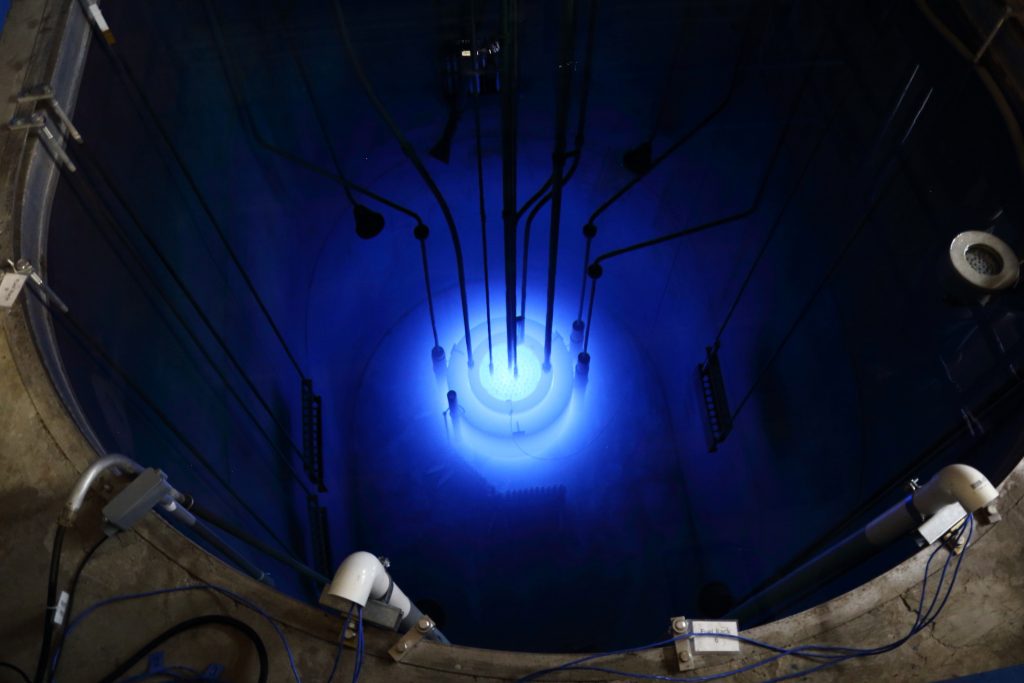
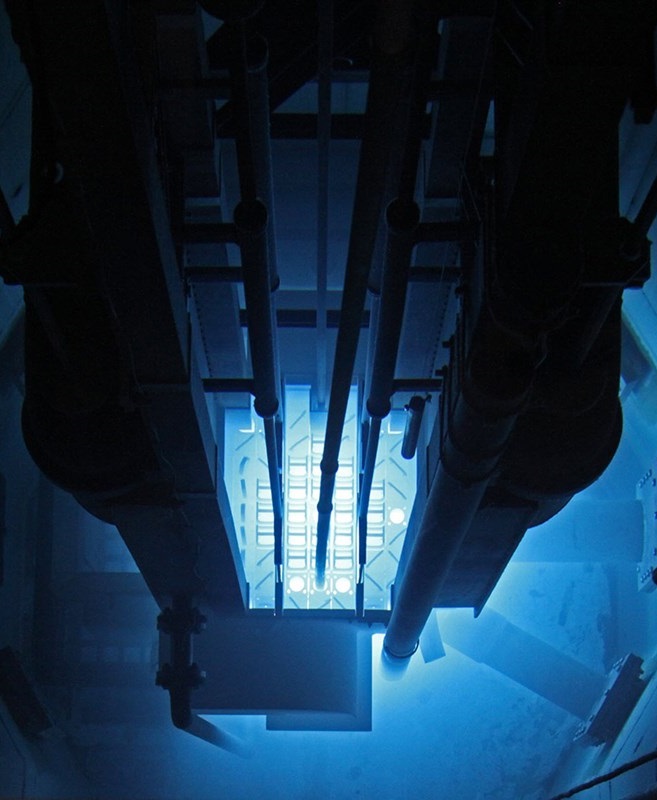
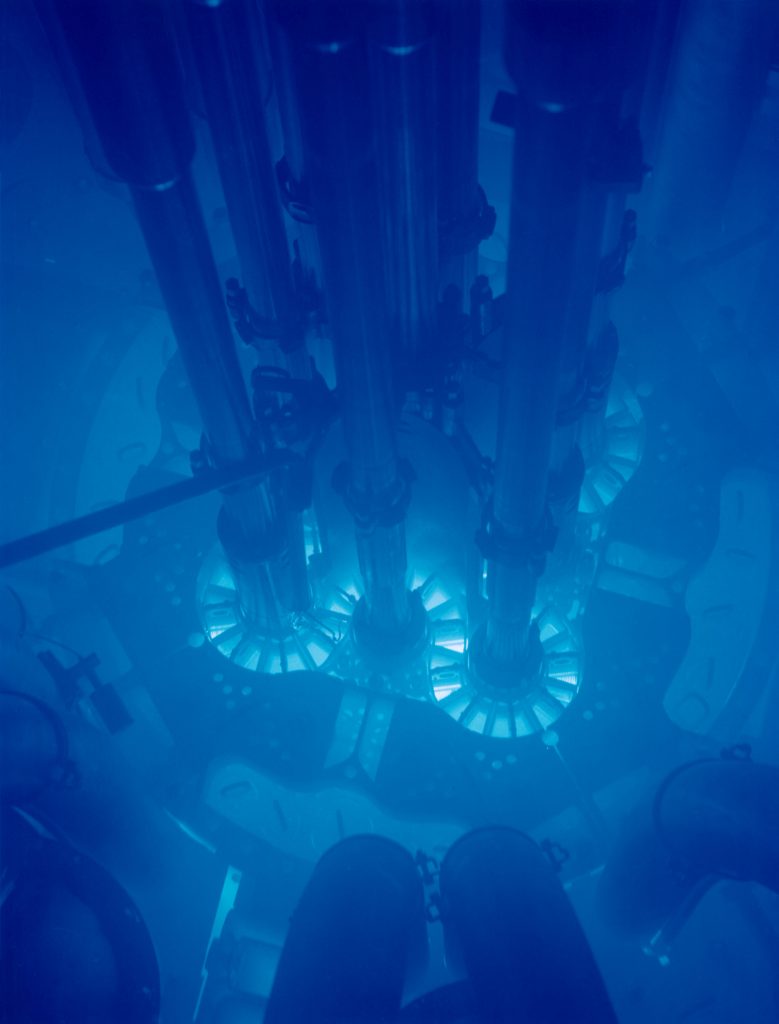
Applications in Reactor Monitoring
Operational Monitoring: The blue glow of Cherenkov radiation in the water surrounding nuclear reactors helps operators monitor the reactor’s status. The intensity and distribution of the glow provide real-time information about the reactor’s operation and the condition of the fuel rods.
Spent Fuel Rods: Cherenkov radiation is used to assess the radioactivity of spent fuel rods. The amount of blue light emitted can help determine the level of radioactivity and the cooling status of the rods. This is crucial for managing and storing spent nuclear fuel safely.
Safety and Maintenance: By observing Cherenkov radiation, technicians can ensure that the reactor is functioning correctly and safely. Any unexpected changes in the radiation pattern can indicate potential issues that need to be addressed promptly.
Remote Monitoring: Advanced detectors can exploit Cherenkov radiation to sense and analyse antineutrinos emitted by nuclear reactors. This allows for remote monitoring of reactor activities, providing insights into the reactor’s operational cycle and ensuring compliance with safety regulations.
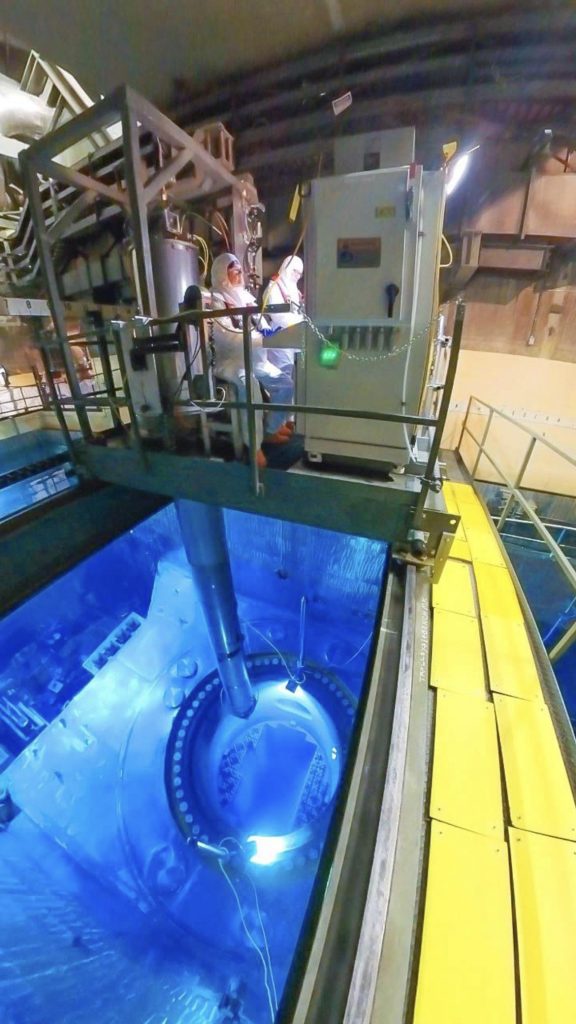
Advantages of Using Cherenkov Radiation
Non-Invasive: Cherenkov radiation provides a non-invasive method to monitor the reactor’s internal processes without the need for direct access to the reactor core.
Real-Time Data: The continuous emission of Cherenkov radiation allows for real-time monitoring, enabling quick detection and response to any anomalies.
High Sensitivity: The intensity of Cherenkov radiation is directly related to the energy of the particles, making it a sensitive indicator of the reactor’s operational status.
Limitations of Using Cherenkov Radiation
Limited to High-Energy Particles: Only effective for detecting high-energy particles that exceed the speed of light in the medium.
Requires Transparent Medium: Needs a medium like water or glass to observe the radiation, which may not be present in all reactor designs.
Other Applications of Cherenkov Radiation
Cherenkov Radiation in Astrophysics
Cherenkov radiation is crucial in astrophysics for studying high-energy cosmic phenomena. In high-energy cosmic ray events, particles entering the Earth’s atmosphere create secondary particles that emit Cherenkov radiation in air. This radiation is detected by ground-based Cherenkov telescopes, such as VERITAS and HAWC, which study gamma rays from sources like supernovae, gamma-ray bursts, and active galactic nuclei.
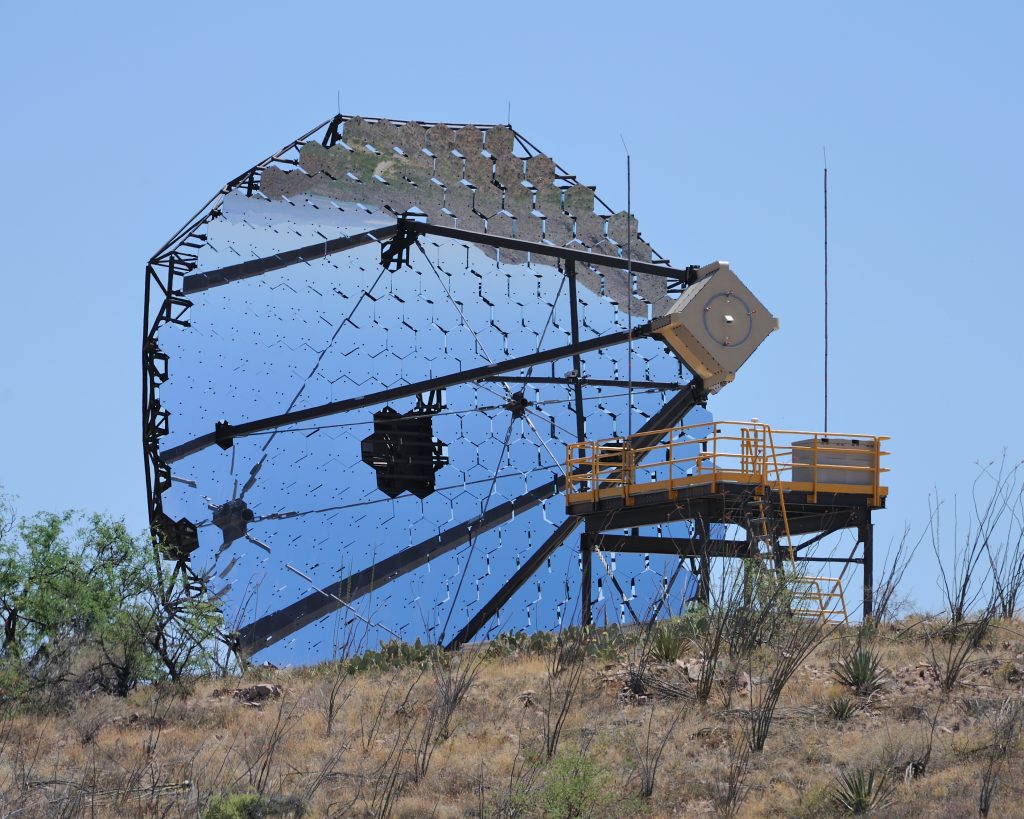
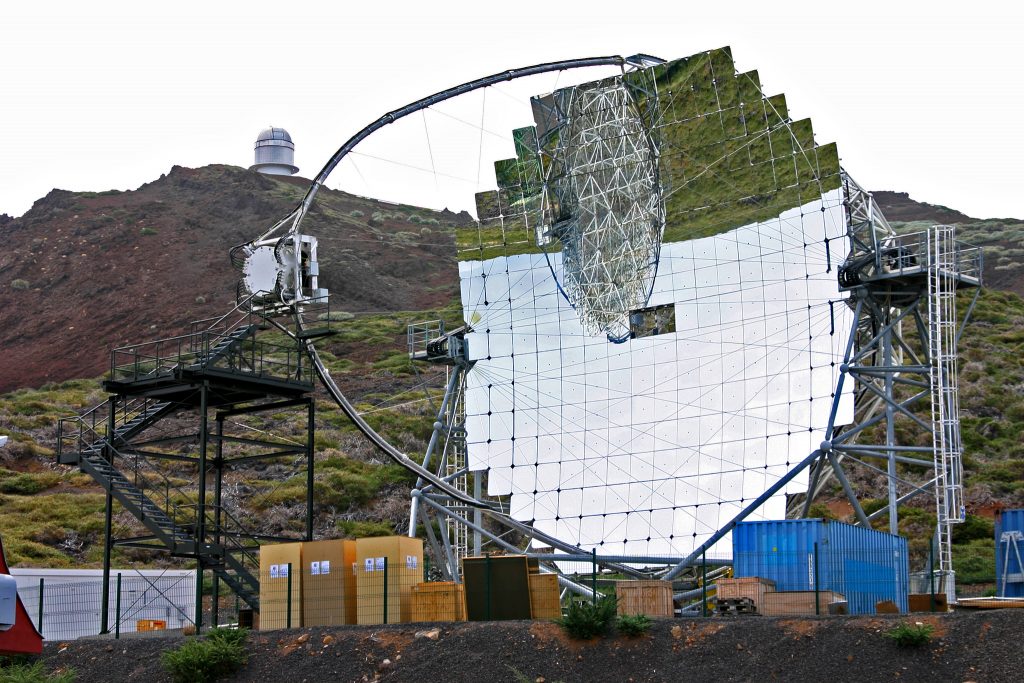
A special type of particle detector used to observe Cherenkov radiation is the Cherenkov tank. These tanks are typically filled with a transparent medium, such as water, and are equipped with photomultiplier tubes (PMTs) to detect the faint light produced by high-speed particles traveling through the medium. The High Altitude Water Cherenkov (HAWC) Observatory uses large Cherenkov tanks to detect particles from cosmic rays and gamma rays. Each tank is about 4 meters high and 7.3 meters in diameter, containing purified water and multiple photomultiplier tubes to capture the Cherenkov light.
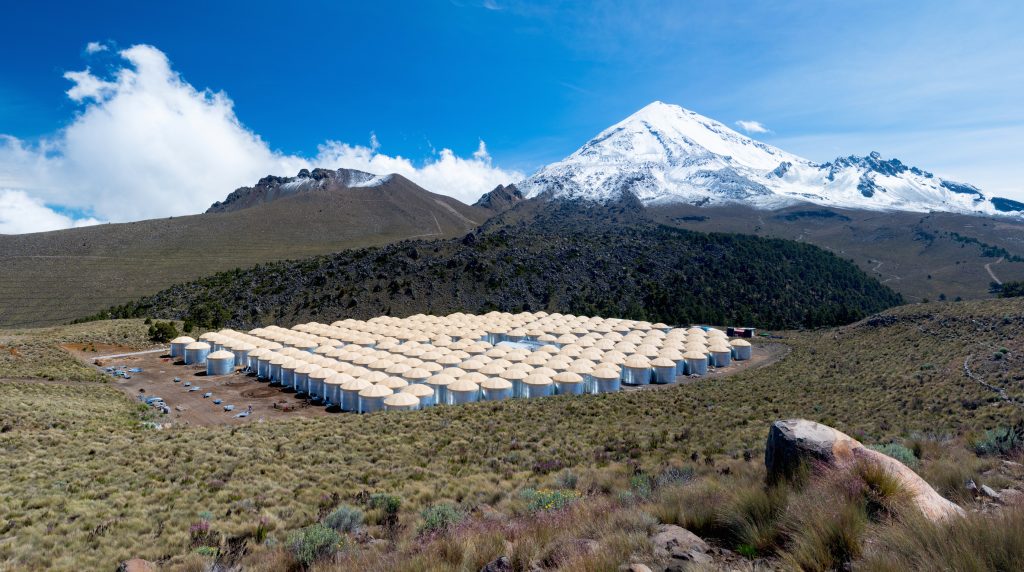
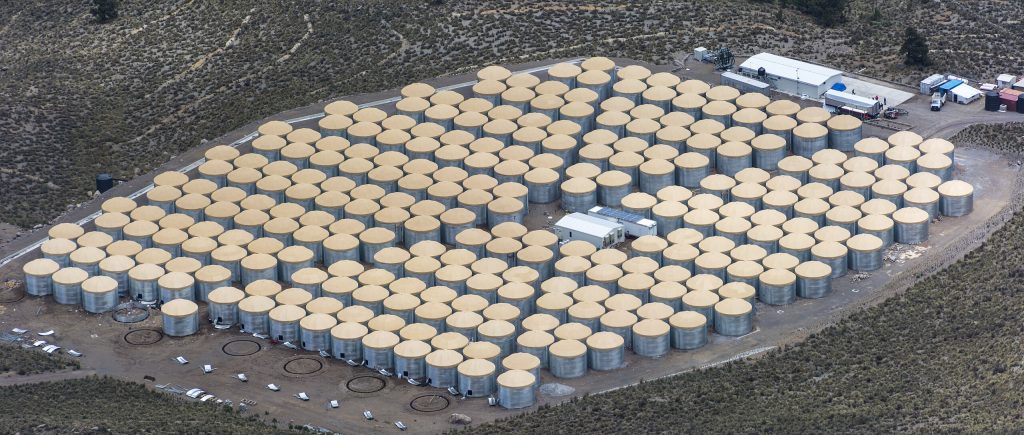
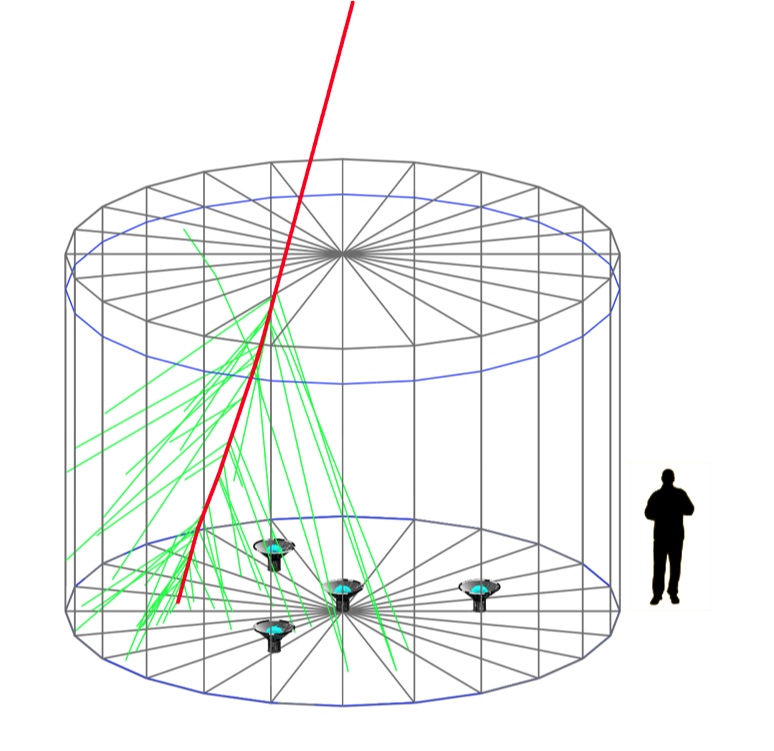
Cherenkov Radiation in Particle Physics
In particle physics, Cherenkov detectors are employed to identify particles by measuring the angle and intensity of the emitted Cherenkov light. This helps determine the particle’s velocity and, combined with other measurements, its mass and type. These detectors are crucial in experiments involving particle accelerators, where precise velocity measurements are needed.
Cherenkov radiation is also used in neutrino detection. Large detectors, such as the Super-Kamiokande in Japan or the IceCube Neutrino Observatory in Antarctica, use Cherenkov radiation to identify neutrino interactions in water and ice respectively. When neutrinos interact, they produce secondary particles that emit Cherenkov light, allowing scientists to study these elusive particles.
Cherenkov Radiation in Medical Imaging
In radiotherapy, Cherenkov imaging allows for real-time visualization of radiation doses delivered to tissues. This helps in verifying the accuracy of radiation delivery, ensuring that the treatment is precisely targeted to the tumour while minimising exposure to surrounding healthy tissues. The technique is non-invasive and does not require additional radiation exposure, making it a safe and effective method for monitoring treatment.
Cherenkov luminescence imaging (CLI) is also used in preclinical research to track the distribution of radiopharmaceuticals within the body. This helps in studying the pharmacokinetics and biodistribution of new drugs, aiding in the development of more effective cancer therapies.

Explore Further
Choose from the articles below to continue learning about nuclear.
Fission – How splitting an atom creates energy
Magnox Reactors – At the Forefront of a New Age
Nuclear Fuel Cycle – Disposal
The Nuclear Fuel Cycle Explained: An Open and Closed Case?
Did you know? Explore Nuclear also offers great careers information and learning resources.
Below you can find references to the information and images used on this page.
Content References
- What is Cherenkov Radiation? | IAEA
- Cherenkov Radiation, Explained | Department of Energy
- Why the Water in a Nuclear Reactor Glows Blue (thoughtco.com)
- An Introduction to Cherenkov Radiation (stanford.edu)
- Cherenkov Radiation (sciencenotes.org)
- Cherenkov radiation – Wikipedia
- Cherenkov radiation | Example of Calculation (electricity-magnetism.org)
- How Cherenkov radiation works | Description, Example & Application (your-physicist.com)
- Unveiling The Elusive Cherenkov Radiation In Air ~ PhysicsPedia.blog (semaforobares.com)
- New Antimatter Detector Could Monitor Nuclear Reactor Activity from Afar – ScienceBlog.com
- Using antimatter to detect nuclear radiation | ScienceDaily
- IceCube Neutrino Observatory – Wikipedia
- HAWC: the High-Altitude Water Cherenkov Observatory (hawc-observatory.org)
- High Altitude Water Cherenkov Experiment – Wikipedia
- Cherenkov imaging for visualizing radiotherapy: one year of clinical use – Physics World
- Frontiers | A Review of Recent and Emerging Approaches for the Clinical Application of Cerenkov Luminescence Imaging (frontiersin.org)
- Applications of Cherenkov and Radioluminescence Imaging to Medicine and Biology | Frontiers Research Topic (frontiersin.org)
Image References
- HFIR pool storage array – Oak Ridge National Laboratory | Flickr – CC BY 2.0
- INL’s Advanced Test Reactor – Idaho National Laboratory – CC BY 2.0
- Removal of a HFIR fuel element – Oak Ridge National Laboratory | Flickr – CC BY 2.0
- Nuclear reactor at Reed College – Don McCullough – CC BY-NC 2.0
- View of the reactor core – Oak Ridge National Laboratory | Flickr – CC BY 2.0
- Hungarian Reactor – Vcsa – CC BY-SA 4.0
- Outage of Arkansas Nuclear One Unit 2 – Gkmatthews52 – CC BY-SA 4.0
- Actinium-225 Vile – Dr Andrew R. Burgoyne – CC BY-SA 4.0
- Reactor nuclear experimental RA-6 – Pieckd – CC BY-SA 3.0
- UMass Lowell Research Reactor – University of Massachusetts, Lowell – Public Domain
- Core of the LANL Omega West Reactor – LANL brochure for Omega West Reactor
- Very Energetic Radiation Imaging Telescope Array System – JanetandPhil – CC BY-NC-ND 2.0
- MAGIC II Cherenkov Telescope – H. Raab – CC BY-NC-ND 2.0
- HAWC & Volcano – Jordanagoodman – CC BY-SA 4.0
- HAWC Aerial – Jordanagoodman – CC BY-SA 4.0
- HAWC Tank Sketch – HAWC Collaboration – CC BY-SA 4.0
